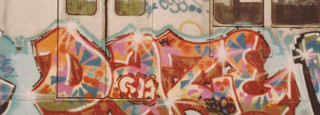
DAZE WORLD
Tuesday, May 9, 2017
From NYC’s walls and subway trains to the world’s greatest galleries, Daze grew up in the city’s ghettos during the 70’s and was involved with the graffiti underground culture. One of the few who dove into the art market with success, he’s exhibited pieces with Basquiat and went international, taking his work to cities like Monte Carlo, Hong Kong, Paris, Beijing, Chicago and Singapore. He’s in the permanent collection of museums like MOMA, Brooklyn Museum, Groninger Museum, Ludwig Museum, and on the walls of big stars like Eric Clapton and Madonna.
Daze is a mark in the American street art and an inspiration to the character Dizzee, from The Get Down. We talked to him to know a little bit more about his journey New York’s counter culture.
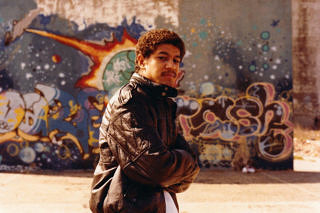
Daze, 1983. Photo: Michael Transue
Tell us a little about yourself and your work.
My name is Daze and I’m from the second wave of subway painters that started painting around 1976 in New York. I was always artistic as a child, drawing my own comics at an early age and trying to paint a little. I become interested in graffiti by watching it on the subways in the 70’s. Instead of providing the answers I always had more and more questions. I began painting trains in 1976 after meeting a few writers in my school. After that it became my whole life from 1976 to 1982. Although I no longer paint trains of course painting in general remains the central focus of my life. It defines who I am as a person in this world.
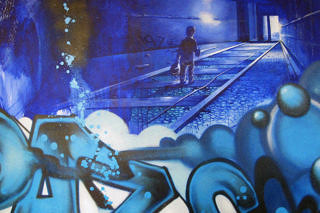
End of the past.
How were you involved with the other elements of Hip Hop culture?
In terms of the other elements of Hip Hop I feel that has been a bit exaggerated in movies, documentaries, and the media. All of these elements, break dancing, dj’s, and MC’s, graffiti, came from the same areas but as far as graffiti goes it was an element that seldom mixed with the others. To put it in perspective i’ll give you an example: Painting trains was my whole life then. If I wasn’t stealing paint, drawing outlines, taking photo’s of trains, and socializing with other writers I wasn’t doing much else. I simply had no time to go to parties and hang out. Of course I knew DJ’s and MC’s growing up but there were very few people that specialized in more than one thing. My whole life then centered around painting trains. Nothing else.Also the world of graffiti drew people in from many different social and economic backgrounds. Not just the hood.
Don in the 70's.
You’re considered the “second generation” of writers coming out of NYC. Who were the writers that you looked up to and that had some influence in your work?
I looked up to Blade, Tracy168, Don 1, Dean, Jester, Cliff159, NOc167, Fuzz, Chain3, Part, Padre. These were guys who I really looked up to and whose work influenced me.
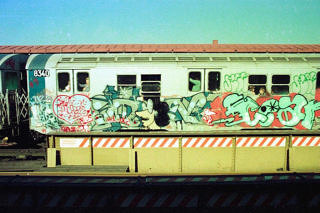
Don in the 70's.
What’s your favorite piece from that era?
I would say that the one piece that really set me off was by Blade. It was a whole car that he painted with dancing girls on both ends of the train. It was magnificent. When I saw that running I knew that the culture was something I had to be a part of. I never painted a train with Blade but it’s an honor to be able to call him a “friend” years later.
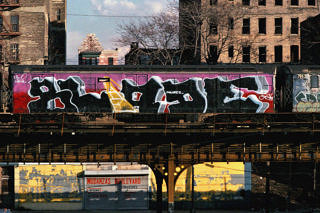
Blade, NYC.
What was the creative process for those pieces?
People outside of the culture think that graffiti is some kind of random act. It’s not. In fact it’s a highly premeditated act. Outlines are developed , locations scouted for maximum visibility, work done, and then everything is documented. Sometimes the entire process is documented.
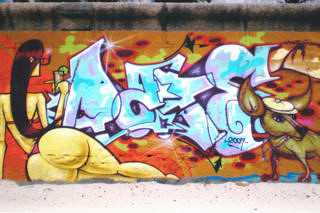
WIth BR. Rio de Janeiro, 2007.
In the early 80’s you started to do paintings for shows in galleries. How did that happen? There weren’t many writers doing shows at that time. Did you have a hard time adapting your work to a much more controlled environment and a smaller canvas?
I started to show in galleries around 1982. At first it was just a kind of experiment.I found making paintings enjoyable. People started to write about it in newspapers and stuff and the general public was interested in this culture that had remained largely underground up until that point. Soon gallery interest followed and it just took off from there. It was an amazing time to be a part of all of that. We packed 10 years of experiences in maybe 3. By 1985 the public in New York cooled off towards us . Some of us were lucky that we had interest from galleries in Europe to be able to continue. I was one of the chosen few who could continue. It was a very difficult period but I had a good work ethic. I worked hard at what I did and would not be silenced
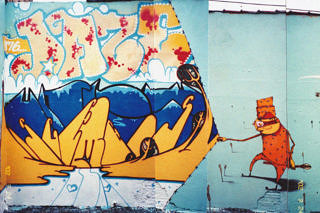
With Vitche, Jana e Os Gemeos. São Paulo, 2002.
Did you ever imagine graffiti would become the worldwide movement it is today?
I never thought that people outside of the culture would be interested in what I did. I always thought that painting would be something I did for a period and then i’d move on. Here I am 41 years later and still painting.

Gray scale.
How was working on The Get Down? It must be crazy to have someone playing a character based on you and in some way reliving all those moments.
Working on “The Get Down” was a great experience. I was brought in during the middle of the first season to bring in more authenticity to the graffiti elements in the series.Musically and visually i’m really blown away by the whole thing. The director Baz Luhrmann has really done an excellent job of capturing the key elements from that period. The last I heard they were animating my character in the series.
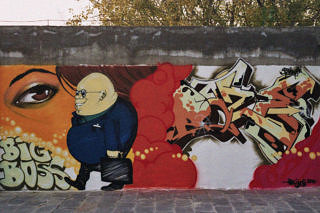
Beijing, China. 2010.
I know you have a special relationship with Brazil, and especially Rio. What was it like for you to come and experience a fairly new and vibrant graffiti scene? It was very different from NYC I suppose…
In some ways the early scene in Rio was very different from New York and in other ways the same. One of the things that really attracted me to the culture in Rio was how hip hop is not some fashionable thing but a culture that speaks to those who don’t have a voice. It accurately describes situations of injustice and inequality. I’ve always felt that while doesn’t have to have a political message in order to be political. The very act itself is defying the system and so that makes it political.I could really identify with what was going on in Rio because I had already lived it in New York. When I first arrived in Rio I didn’t want to be that guy who would just make a couple of pieces and leave. I wanted instead to really be a part of what was happening there.

Baton Rouge, 2014.
Being the most “carioca” out of all the NYC writers, how does our city inspire you?
I’m inspired by all things in Rio. Both good and bad. I think what I found there is a kind of perfect balance between art and life. Both are entwined in a way where there is no separation. There is music, art, beach culture, food and most of all I found inspiration in the people themselves. It’s still one of my favorite cities in the world. On the other hand it is very difficult to make a living as an artist there. Typically artists have to leave and come back to be taken seriously. If it weren’t for that I would still be there.
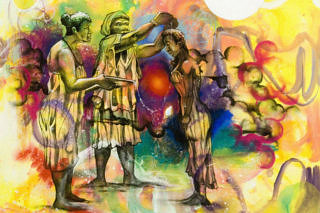
Candomble
What do you think of the Brazilian graffiti scene nowadays?
I have not been in Rio in some time but I can still see what is happening via the internet. The scene there has grown a lot and the artists I painted with 5 to 10 years ago have really matured.
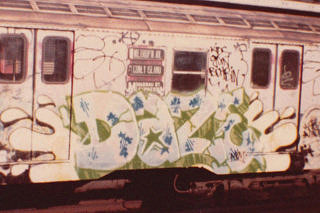
M Line, 1981.
The mayor of São Paulo started a major, city wide, buff. He’s this upper class businessman type of character who thinks graffiti not only brings a sense of unsafeness, but it also brings property value down. Being involved in many public art projects over the years, what are your thoughts on that?
The mayor of Sao Paulo is finding yet another way to waste tax payers money. The same thing has been happening in New York for decades and it’s a waste of money
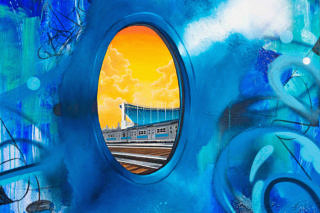
View from 161st
Tell us a little about your book. Can we find it online?
My book is called ‘Dazeworld”. It is a kind of journey which takes the reader from my humble beginnings up until the present. It’s also a kind of “greatest hits” book where I try to cover some key points in my career. It can be found at Schiffer Books or at Amazon.

São Paulo, 2002.
Tags: Art, Inspiration, Interview
Go back to Blog
Assine o Saleiro: nosso jornal digital
Pitadas mensais de criatividade e bom humor para incluir na caixola. Não perca!